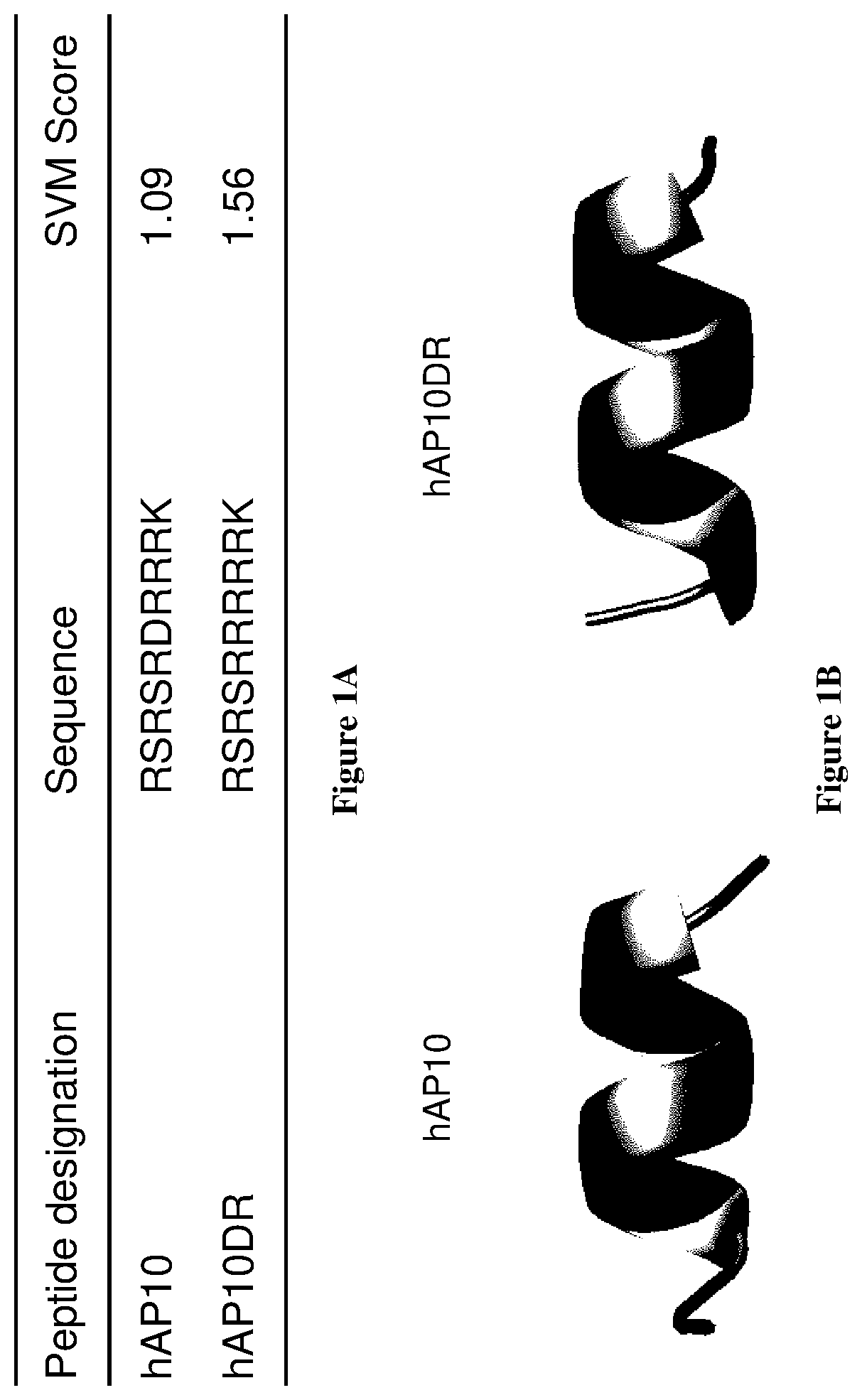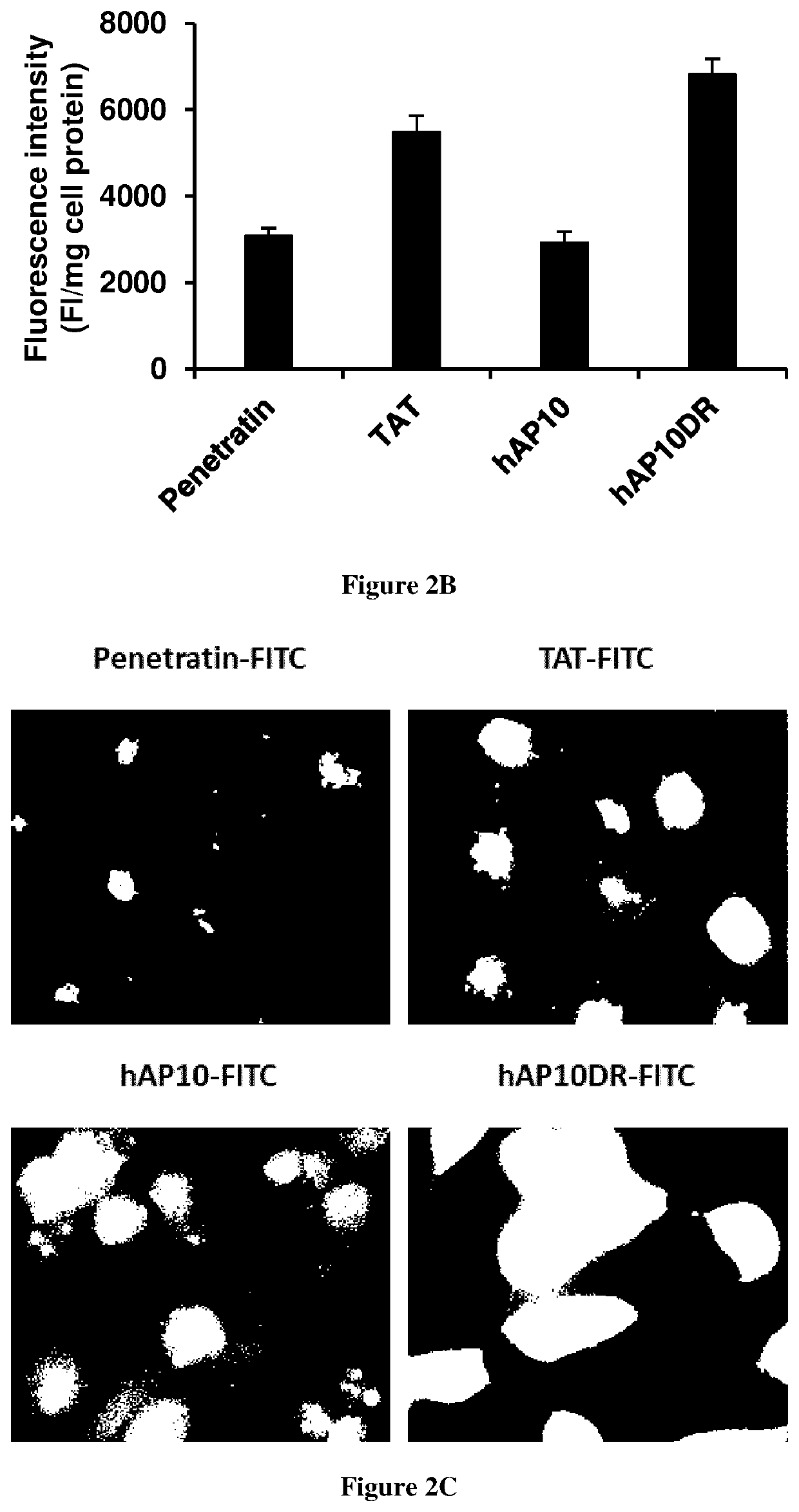Cell penetrating peptides for intracellular delivery of molecules
a cell-impermeable material and intracellular technology, applied in the field of pharmaceutical sciences, can solve the problems of inefficiency, inefficiency, cytotoxicity or lack of reliability in in vivo settings, and limitations of the repertoire of possible pharmaceutical agents and biologically active molecules
- Summary
- Abstract
- Description
- Claims
- Application Information
AI Technical Summary
Benefits of technology
Problems solved by technology
Method used
Image
Examples
example
Material & Methods
[0051]Peptides characterization
[0052]The support vector machine (SVM)-based prediction of cell penetrating properties was performed with the online CellPPD tool (25). Secondary structure predictions were performed with PSIPRED (28). Three-dimensional structure predictions were carried out with I-TASSER (29). Figures were generated with PyMOL (http: / / www.schrodinger.com). Energy maps of the peptides were analyzed and generated using Molegro Molecular Viewer.
[0053]Cellular uptake quantification
[0054]Cellular internalization of FITC-labelled peptides was analyzed using flow cytometry. Cells were incubated in the presence of the peptides (5 μM each) in complete medium for 1 h. Cells were then washed three times in PBS and incubated with trypsin (1 mg / ml) for 10 min to remove the extracellular unbound peptides. Finally, cells were suspended in PBS and kept on ice. FITC fluorescence intensity of internalised peptides in live cells was measured by flow cytometry using BD ...
PUM
| Property | Measurement | Unit |
|---|---|---|
| pH | aaaaa | aaaaa |
| volume | aaaaa | aaaaa |
| time | aaaaa | aaaaa |
Abstract
Description
Claims
Application Information
 Login to View More
Login to View More - R&D
- Intellectual Property
- Life Sciences
- Materials
- Tech Scout
- Unparalleled Data Quality
- Higher Quality Content
- 60% Fewer Hallucinations
Browse by: Latest US Patents, China's latest patents, Technical Efficacy Thesaurus, Application Domain, Technology Topic, Popular Technical Reports.
© 2025 PatSnap. All rights reserved.Legal|Privacy policy|Modern Slavery Act Transparency Statement|Sitemap|About US| Contact US: help@patsnap.com



